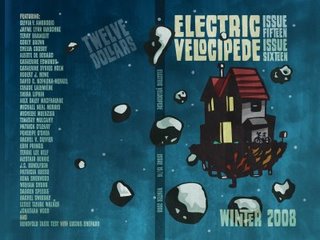SFWA announces inaugural Solstice Award recipients Kate Wilhelm, Martin H. Greenberg and the late Algis Budrys are recipients of the inaugural Solstice Award, presented by the
Science Fiction & Fantasy Writers of America.
SFWA President Russell Davis made the announcement Feb. 10. The recipients will be honored during the Nebula Award Weekend® in Los Angeles, Calif., April 24-26.
Created in 2008, the SFWA Solstice Award may be given at the discretion of the president with the majority approval of the SFWA Board of Directors. No more than three awards may be given in a fiscal year. The Solstice Award may be given to any person, living or deceased, with the exception of an individual who has already received either a Damon Knight Memorial Grand Master Award or named Author Emeritus, who has had a significant impact on the science fiction or fantasy landscape, and is particularly intended for those who have consistently made a major, positive difference within the speculative fiction field.
Kate Wilhelm’s writings span a wide range of genres and media. With her husband, the late Damon Knight, Wilhelm helped establish the Clarion Writer’s Workshop and the Milford Writer’s Conference, providing invaluable assistance to many writers over the years. Wilhelm continues to host monthly workshops, as well as teach at other events.
“As a new writer many years ago I was met with a generosity of advice, help, and encouragement that I've never forgotten,” Wilhelm said. “I assumed wrongly that it was general to all writing groups. It isn't. It is a unique spirit within the speculative fiction field for which all members can take pride. I am honored by this award, and thank those who have granted it, but with the awareness that at long last that generous sharing of knowledge and experience by the community as a whole is being recognized. Thank you very much.”
Martin H. Greenberg published his first anthology in 1974, and since then has gone on to shepherd hundreds of anthologies of both new and reprint material as president of Tekno Books. Greenberg’s anthology projects have long provided a valuable outlet for short fiction, an importance that is only enhanced as the periodical market continues to contract.
“It’s a great honor to receive this award,” Greenberg said. “Short fiction is close to my heart but this recognition also belongs to my professional colleagues, the editors and writers that I’ve been privileged to work with over the last 30 years.”
Known to many fans and friends as A.J., Algis Budrys wrote, reviewed and edited a wide array of science fiction beginning with his first sale in 1952 until his death in 2008 at the age of 77. Budrys’ career took him behind the editorial desk at Gnome Press, Galaxy, Regency Books and Playboy Press. He was the long-time coordinating judge for the L. Ron Hubbard's Writers of The Future competition, organizing workshops for the participants and offering advice and assistance to countless aspiring authors.
“A.J. felt strongly about helping and encouraging new writers,” said his widow, Edna Budrys. “In a workshop he would critique a story in a way that showed what was wrong, but never in a cruel way. He did it with kindness, and never diminished the person. He enjoyed helping aspiring writers improve and become successful.”
The Solstice Award is not reserved to members of SFWA, nor just to writers, but is intended as a broad spectrum award to recognize a wide variety of individuals.
“The creation of the Solstice Award is, I think, a great opportunity for SFWA to be able to recognize the many valuable people that have made the entire field of speculative fiction what it is today, and who have contributed to a mindset of paying forward,” said SFWA President Russell Davis. “Our first recipients, Algis Budrys, Martin H. Greenberg and Kate Wilhelm exemplify the spirit of this new award.
“Algis Budrys had an amazing impact on the field as a writer, editor and reviewer, but more than that, he was a mentor to many, many young writers who have gone on to have noted careers of their own,” he said. “As a noted anthologist, Martin H. Greenberg has launched untold numbers of writers on their career and no one has done more to keep the anthology market alive. And Kate Wilhelm, whose career has spanned many years and who is intimately tied to SFWA’s very beginnings, helped launch both the Clarion and the Milford writer’s workshops--and continues to offer workshops to this day. I am very excited about being able to recognize all three of these individuals at this year’s Nebula Awards banquet and believe they represent the very best of what the Solstice Award is truly about.”
The 2009 Nebula Awards® Weekend will be held in Los Angeles, Calif., April 24-26. Harry Harrison will be honored as the next Damon Knight Grand Master, while M.J. Engh will be honored as Author Emerita. Singer/songwriter/author Janis Ian will be on hand to serve as toastmistress. Victoria Strauss will also be presented with the SFWA Service Award.
About SFWAFounded in 1965 by the late Damon Knight, Science Fiction and Fantasy Writers of America brings together the most successful and daring writers of speculative fiction throughout the world.
Since its inception, SFWA® has grown in numbers and influence until it is now widely recognized as one of the most effective non-profit writers' organizations in existence, boasting a membership of approximately 1,500 science fiction and fantasy writers as well as artists, editors and allied professionals. Each year the organization presents the prestigious Nebula Awards® for the year’s best literary and dramatic works of speculative fiction.
-30-
































